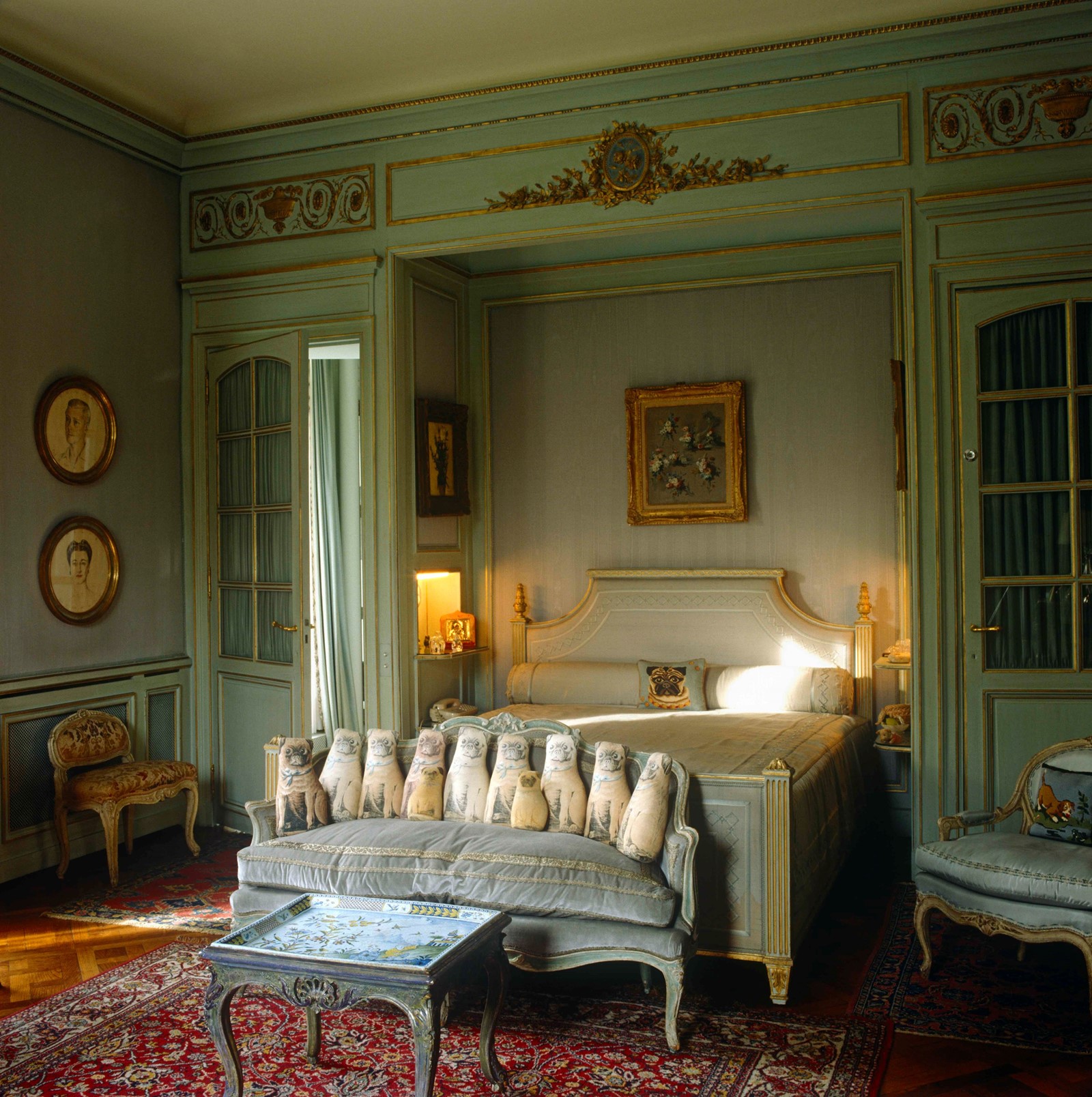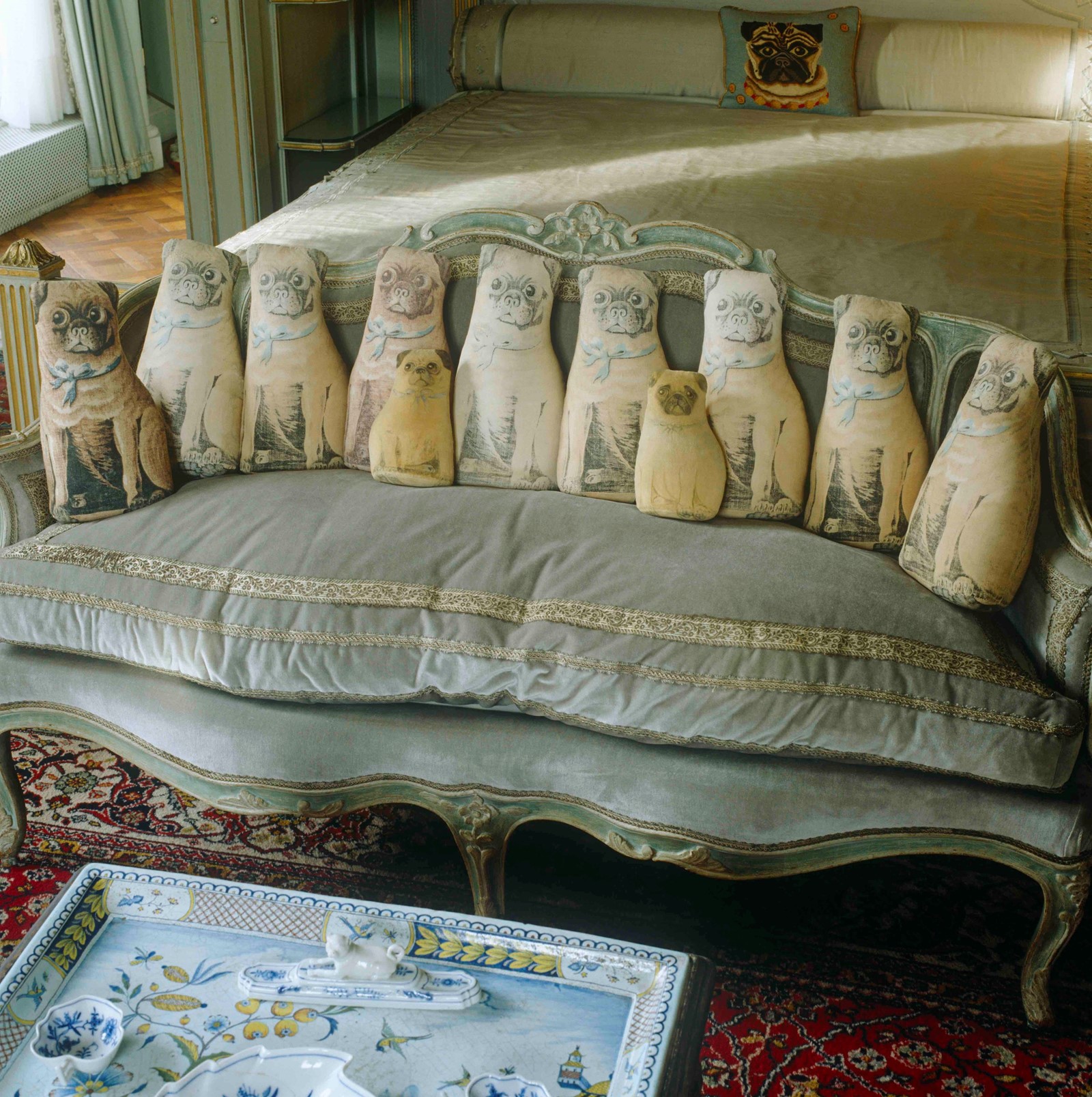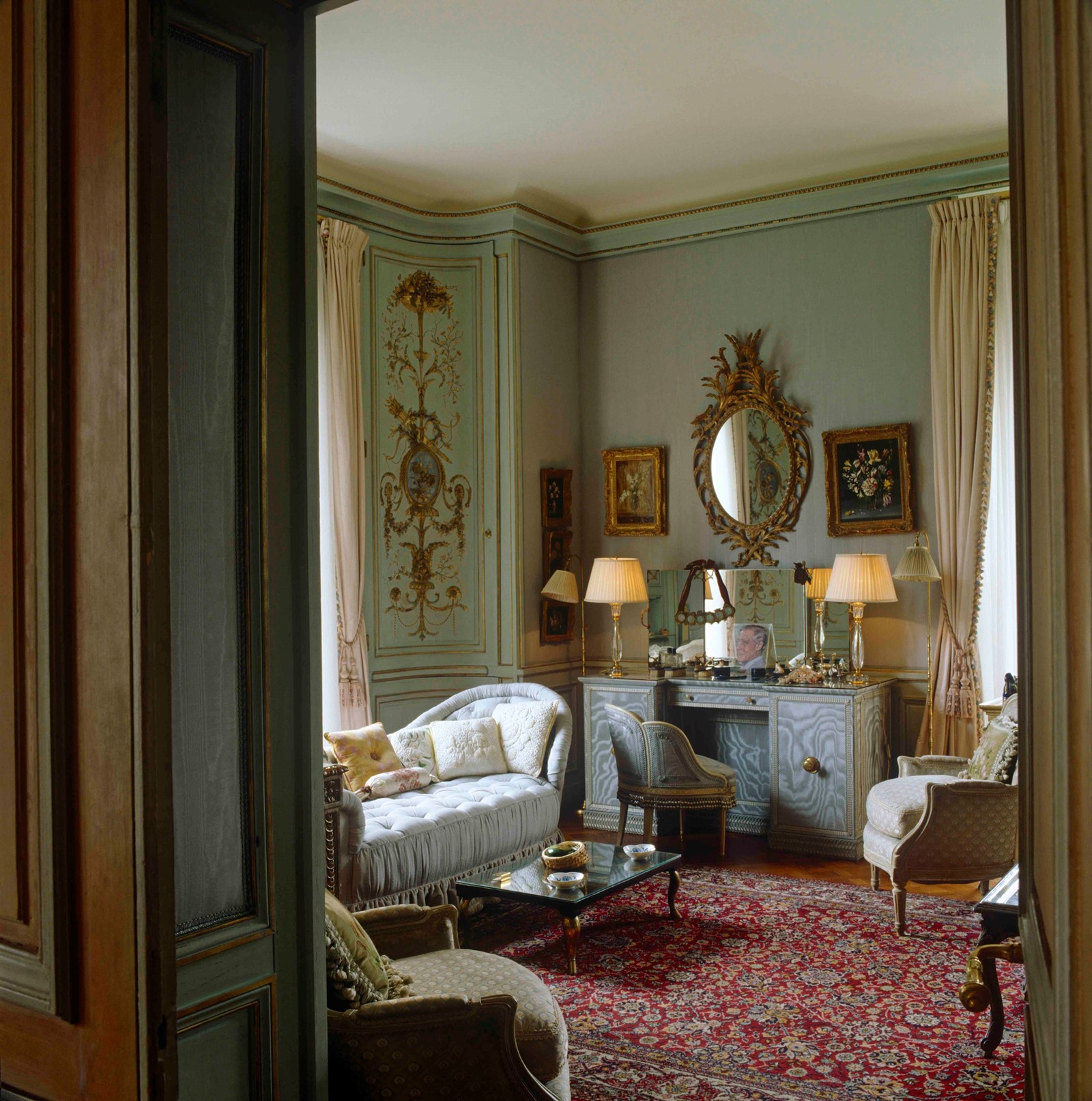The self-isolation of the COVID-19 pandemic has focused attention inwards – as we are all, always, looking at our own interiors. Inspired by those limitations, each week on AnOthermag.com we will examine extraordinary interiors of the past – sometimes still around, sometimes dismantled – taking inspiration from their style and histories, to tell the stories that make them extraordinary. To inaugurate the series, an examination of a truly extraordinary room: the famously Wallis-blue bedroom of the Duchess of Windsor.
The Duke and Duchess of Windsor – the infamous former Mrs Wallis Simpson, and the almost King Edward VIII, who abdicated before his own coronation – spent their life in splendid exile, from the moment the Duke gave up his throne in December 1936 for “the woman I love”. The Windsors were strange figures in café society, dedicated to superficial pleasures – dressing up, dancing, drinking rather too heavily, “renting themselves out” as John Fairchild of WWD so bluntly put it in his aptly titled book, Chic Savages. “It was all about appearances,” says the esteemed fashion critic Suzy Menkes, Editor at Vogue International, who wrote a book – The Windsor Style – that dissected the minutiae of their aesthetics, not least decor. “Wallis’ mission was to make the Duke’s life pretend royal,” she says. “The entire story is in Wallis’ silk petticoats and nightdresses embroidered with royal markings ... when she was not really royal.”
From the late 1930s onwards, the Windsors circulated between numerous homes, lavishly decorated by themselves at great expense. In the 1950s, they finally settled at 4 Route du Champ d’Entraînement, a grand villa in the Bois de Boulogne on the outskirts of Paris. Today, it is just down the road from the Frank Gehry-devised Fondation Louis Vuitton – but the Windsor’s home is far more conventional, an example of high Napoléon III bourgeois style. It was originally a summer home created for Baron Georges-Eugéne Haussmann, who famously reconfigured Paris during the Second Empire, and was leased for the nominal rent of £25 a year (and tax free) to the Windsors, who moved in in 1953. “A re-creation in the 1950s of a 1930s ideal,” was how the historian and architectural editor of Country Life, John Cornforth, later described the house.

Of course, the Windsor style – like so much else about the couple – wasn’t original. “Not convinced that either of them had real taste,” says Menkes. “Except his for jewels and hers for fashion.” And just as those Windsor’s jewels were modern styles created from older pieces broken apart and reassembled (reputedly including emeralds from the crown jewels, via the Duke’s grandmother Queen Alexandra), so her decor was actually the amalgamation of the talents of very many hands and minds. Elsie de Wolfe, Lady Mendl, had masterminded the Duchess’ decor from when she was still Mrs Simpson: Mendl’s trademarks of soft colours, love of trompe l’oeil, and a mishmash of modern, genuine antiques and rehashes of 18th-century pieces – what the decorator Mario Buatta would later evocatively term ‘Louis Hooey’ – appear again and again, mingled with royal memorabilia, gilded trinkets, and masses of Meissen pug-dogs, good luck totems for the duo. The highly fashionable style of 1930s decorator Syrie Maugham was also an influence, her pale palettes, mirrored finishes and painted and distressed woodwork (many of the Windsor’s pieces from the 1930s were painted and repainted, to suit new colour schemes). The decor of the house itself was devised not by Wallis, but by Stéphane Boudin of Maison Jansen, who would rise to international fame a decade or so later as one of the masterminds behind Jacqueline Kennedy’s budget-busting redux of the White House interiors. The input of Boudin was hidden by White House officials, perhaps because of his French base – but also, possibly, because his company had the repute as decorators to the A-list, his creative input being some of the priciest on the market. He was credited chez Windsor, and his eye – and budget – ran riot. “The possession of beautiful things,” the Duchess once said, “is thrilling to me.”
The Duchess of Windsor’s bedroom was, perhaps, the apogee of that mishmash we call the Windsor style. Blue dominated the house’s entire decor, in her bedroom, her bathroom, the dining room and the silver-blue Grand Salon: the colour set off the Duchess’ eyes. She also had a preference for sapphires, while her wedding dress by the American couturier Mainbocher was a pale blue-violet shade subsequently dubbed ‘Wallis Blue’. Custom dictated that, after two previous husbands, it couldn’t be white – though the volatility of the dye means that now, in the collection of the Metropolitan Museum of Art, the gown is a washed-out beige, the colour it seemed in so many black-and-white newspaper photographs of the time.

Her bedroom, however, still hums with that specific shade of Wallis blue, the walls garlanded with gilt wheat sheaves and veiled with silk moiré. That that colour dominates is a reflection of the personality of the Duchess vis-a-vis her husband: if he was once a king, she remained a queen, and he worshipped her as such. In the Duke’s bedroom – they retained separate suites – were no less than 25 photographs of the Duchess, part of an expansive array he jokingly dubbed his “Wallis Collection”. His obsession with her was unsurpassed. At the foot of the Duchess’ bed sit not pictures of the Duke, but a dozen or so graduating pug pillows by Toy Works, based on a turn-of-the-century pattern – the Windsor style remains so appealing, reproductions of them can be bought on Etsy. The bows around their necks are, of course, blue. The Duchess of Windsor’s real pugs often shared her bed with her: fastidious to the point that she insisted every lettuce leaf on every plate at dinner be the exact same size, the Windsors never house-trained their dogs. The Duchess slept beneath a crinkling, waterproof layer of plastic. It was in that bed that she died, in 1986, after a long illness.
The Duchess of Windsor’s bedroom is an extraordinary excursion in style – it is elegant, chic, possibly a little too much. If it was pink, rather than blue, it would have shades of Barbara Cartland. Yet, as a historical site – where one of the world’s most reviled women and two of the twentieth century’s most known figures, envied and pitied in equal measure, lived and died – it is, perhaps, unsurpassed. It’s impossible not to imagine, after the drama of their clandestine romance and the bombast of the King’s abdication, their ill-advised meetings with Adolf Hitler and, given those demonstrably pro-German views, their subsequent banishment to the Bahamas from the European theatre of war, the comparative silence of that house on the outskirts of Paris. Or, rather, that house’s boredom and luxurious stupor. It is where the Duke and Duchess went to die. The Duke and Duchess filled it with life, of a sort – with café society, an alternate aristocracy most regularly peopled with those of little or no influence who would buck protocol and curtsey to the Duchess, who was formally denied the style ‘her Royal Highness’. It was an inconsequential slight that took the magnitude of a wound in their cloistered, petty world. Here, in their pretend court coloured forget-me-not blue, the Duke and Duchess lived out their final days in a splendid isolation. The Duchess dubbed her life “Wallis in Wonderland,” but like the Lewis Carroll book she borrowed from, you were never sure if it was a dream or a nightmare.
